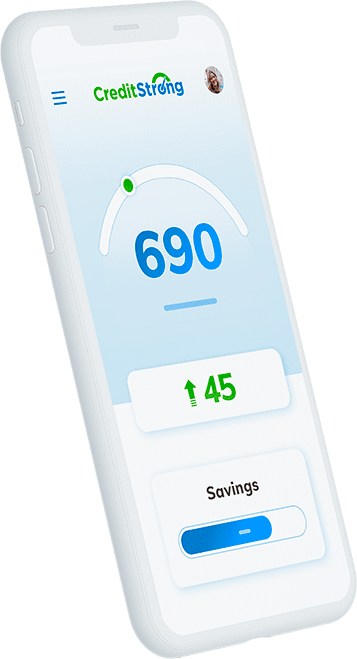UCC Filings and Your Business Credit Scores

Build strong business credit
with your EIN
If you’ve borrowed money for your small business and used collateral to secure the loan, you may notice something called a UCC filing on your business credit report.
The UCC refers to Uniform Commercial Code, and such a filing on your commercial credit report can impact your ability to obtain credit in the future.
What Is a UCC Filing?
A UCC filing is a legal notice that allows a creditor to notify other creditors about assets your business has used to secure a loan with the filer. Lenders can file UCC liens with the secretary of state offices, which then act as public notices that anyone can find.
In other words, it’s a way for a lender to officially announce its claim to the collateral that you used to secure a loan with the lender.
Forms of collateral can vary but are usually agreed upon by the business owner and the lender before the loan is closed.
If you’re applying for an equipment loan, for instance, the equipment you’re purchasing may serve as collateral. In other instances, lenders will typically let you know which types of assets they accept as collateral.
Once a UCC filing has been created, it remains in force until you’ve paid the loan in full or refinanced it with another loan.
The purpose of a UCC filing is to ensure that small business owners can’t offer the same assets as collateral on multiple loan applications.
What Is the Uniform Commercial Code (UCC)?
The Uniform Commercial Code is a set of rules created to help regulate commercial transactions. Because each state has the right to create its own unique laws to govern such transactions, things can get complicated when companies do business across state lines.
The UCC, which was first adopted by Pennsylvania in 1953 and then by all other states over the next 20 years, is a comprehensive set of laws adopted by states to provide uniform rules and regulations.
While it’s not a federal law, businesses are obligated to comply and can enter into contracts and agreements based on the UCC, knowing that the terms will be enforced, regardless of which state they operate or do business in.
The UCC is managed by the Uniform Law Commission and the American Law Institute, whose members make up the Permanent Editorial Board for the Uniform Commercial Code (PEB).
The PEB monitors developments, recommends amendments and revisions, and publishes commentary to provide assistance to courts that are tasked with interpreting UCC rules.
What Does a UCC-1 Mean?
A UCC-1 statement is the official name of a UCC filing. The UCC-1 allows a creditor to formally and publicly declare its rights to an asset in the event that the borrower that used the asset to secure a loan ultimately defaults on that debt.
Lenders are required by the UCC to incorporate full UCC-1 statements in their loan agreements for such a claim to be effective.
The statement is also required to include detailed information about the borrower, along with an itemized description of all assets being used as collateral on the loan.
There are a couple of types of UCC-1 statements that a creditor can file. Specific collateral UCC-1 statements, for instance, give the filer first-order secured rights to the asset in question. This type of statement is common in real estate and equipment financing.
The second is a blanket lien or “all-asset” lien, which gives the creditor rights to a range of assets owned by the business. The terms of the lien must be detailed in the collateral section of the UCC-1 statement.
With some exceptions, UCC-1 statements are good for five years, but creditors can file a continuation within six months of the expiration date if the loan remains unpaid.
An Example of a UCC Lien Filing
Small business owners can use just about any type of asset as collateral to secure a loan. However, the most common forms of collateral include real estate, vehicles, equipment, inventory, and investment securities.
As an example, let’s say you own a pizza restaurant and want to finance the purchase of a new oven for more capacity. If you use an equipment loan, the lender will file a UCC lien to publicly lay claim to the oven in the event that you don’t pay off the debt as originally agreed.
If you default, the lender can seize the oven — and possibly other assets, depending on the type of UCC-1 statement — to recoup the unpaid balance.
But, let’s say that while you’re still working on paying off the equipment loan, you want additional financing to grow your business. If you apply for a loan that requires collateral, you can’t use the pizza oven as collateral because it has an outstanding UCC filing on it.
Even if you try, lenders will be able to see the UCC filing on your business credit reports and can perform a search in your state and see the UCC-1 statement.
How UCC Filings Affect Your Business Credit
When a creditor files a UCC-1 statement with the secretary of state, the filing will show up on your business credit reports. While the filing doesn’t directly impact your business credit scores, missing payments or defaulting on the underlying loan can wreak havoc on your scores.
More relevant is how a UCC filing impacts your ability to obtain credit. If you’re applying for financing after you’ve used an asset as collateral on a previous loan, you can’t use that same asset to secure a new loan.
Even if you’re not trying to use the asset as collateral, lenders may use its status to determine how much leverage your small business has, which can impact your ability to get approved.
Once you’ve paid off a loan, you may think that the lender will automatically terminate the UCC filing, in which case, you could use that same asset to secure another loan without any problem.
But that doesn’t always happen. In some cases, UCC filings can remain on your credit reports for years after you’ve paid off the loan.
As a result, it’s crucial to check your business credit reports often to keep track of your payments and how creditors are reporting information to the commercial credit bureaus.
How Do I Get Rid of a UCC Filing?
If your loan is still outstanding, you need to either pay off the loan or refinance it with another lender before you can get rid of the UCC filing on your business credit reports.
Once the loan has been satisfied, there are a couple of ways you can get rid of the UCC filing. The first is to ask the lender to remove it by filing a UCC-3 statement.
This statement, which is also referred to as a UCC termination statement, amends the original filing and terminates the lender’s rights to the collateral in question.
If your lender fails to submit the termination statement and you want to use the asset to secure another loan, you can visit your local secretary of state office and swear under oath that you’ve satisfied the debt.
The Bottom Line
UCC filings are common practice in business financing transactions and serve to protect commercial lenders from accepting assets as collateral if they’ve already been pledged to previous creditors.
If you have one or more UCC-1 filings on your business credit reports, match them with your outstanding loans to make sure they’re legitimate.
If you have UCC filings on your credit reports for debts that you’ve already paid in full, reach out to the creditor and request they have it removed from your reports. If that doesn’t work, visit your local secretary of state’s office to request assistance.
In all of this, it’s important to check your business credit reports often to ensure that you build business credit responsibly so that you can receive affordable financing when you need it to grow your business.
CreditStrong for Business is the only 0% interest business credit builder in the nation
